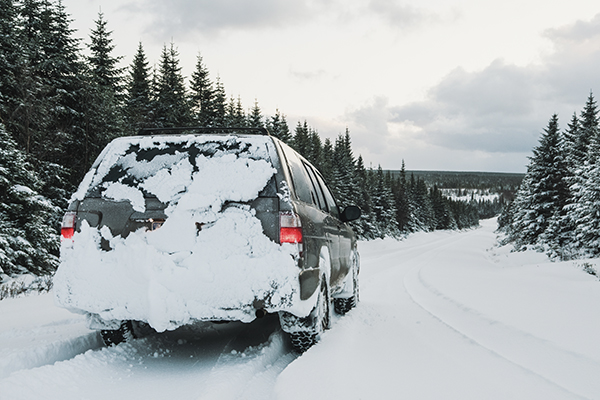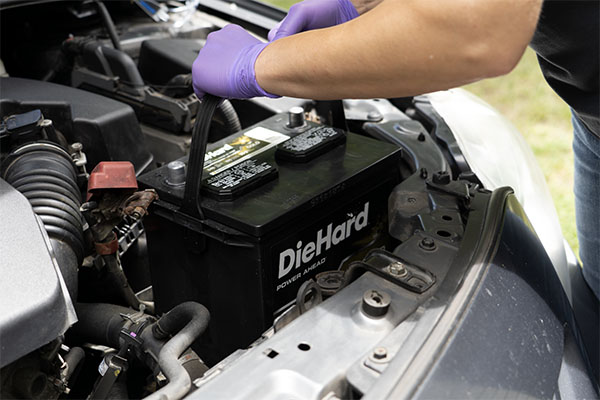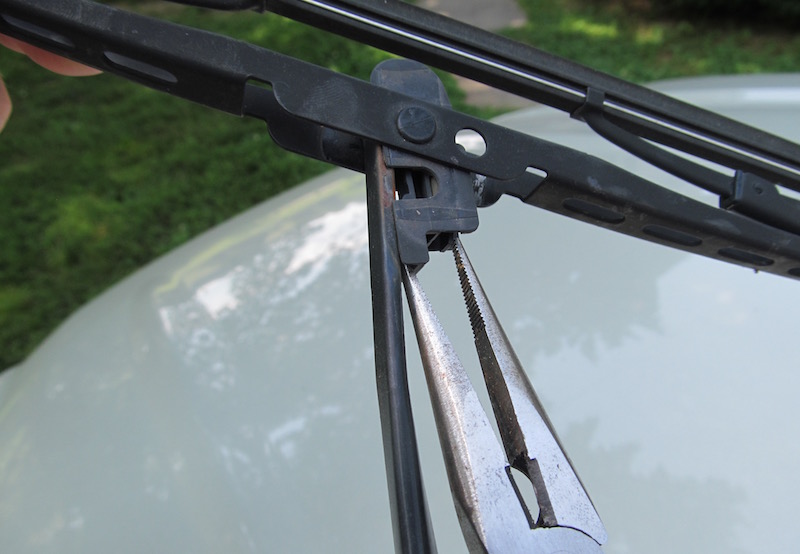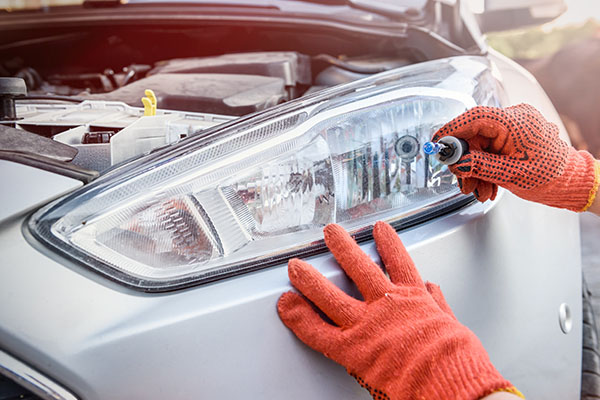As frigid temperatures sweep the country this holiday season, many car owners might be looking for tips to secure and protect their vehicles.
Normally, a focus on staying cozy inside our vehicles with steering wheel covers, heated seat covers, gloves and hot drink tumblers, makes a lot of sense — but, trust me, it pays to be prepared for roads covered in ice, snow and sleet. So pull out your trusty ice scraper and get ready: here's our easy winter car maintenance checklist (with a printable shopping list) to help protect your vehicle from the harsh weather ahead.

Source | Getty
1. Protect Your Vehicle's Exterior
Take the time to scrub away last season's buildup and do a full-body wash. Then apply quality car wax to protect against the impending barrage of snow and road salt. Need help getting started? Here's how to wash and wax like a pro and protect your vehicle from road salt treatments.
2. Change Your Oil
Some of us don't think about oil when it comes to winter vehicle maintenance, but this can be a good time to switch from conventional to synthetic if you haven't already (and if it's appropriate for your car). Cold weather starts can be easier on your engine with full-synthetic oil because synthetic flows freer at low temperatures and doesn't require any time to warm up, providing crucial and immediate protection to the engine's moving parts.
Haven't made the switch? Try a synthetic blend. Synthetic blends consist of synthetic oil coupled with naturally occurring conventional oil. Check out oil specials at Advance and be sure to use the Add a Vehicle feature to confirm which oil is right for you. For more in-depth information on this topic, read up on the debate between synthetic and conventional oil.
3. Maintain Your Battery
Summer's heat takes a toll on batteries, and that weakness is bound to show up on the first really cold morning — it's why batteries tend to fail in winter. So swing by Advance for a free battery and charging system test and replace the battery if it's weak. For most vehicles, Advance will even install your battery, one of our many free services available to you.
If you have a luxury or hybrid vehicle, don't forget to check your auxiliary batteries.
A fresh battery is your best defense against cold weather, but it isn't a guarantee. If you live in an especially cold climate or use your vehicle infrequently, you may want to keep your battery attached to a maintainer or trickle charger. This is because your battery is working harder in cold weather and will gradually lose power over time if it isn't in use.
4. Ensure Visibility

Source | Getty
Being able to see where you're going is always top priority, but in winter it becomes especially important. Your first task is to make sure all of your lights are working. If your headlights or tail lights are dim or yellow, replace the bulbs and clear up the lenses using a headlight restoration kit.
We also recommend that you replace windshield wipers with blades in climates where snow and ice can be expected. At the very least, fill up the windshield washer tank with a deicing fluid. It'll help you out on those cold morning commutes!
5. Inspect Your Tires
Traction is key here. Take a look at your tires; if the treads don't have sufficient depth, get a new set. You'll need the best traction possible for dealing with treacherous roadway conditions. Depending on where you live, you may even want to invest in snow tires. Not sure which tire type is best for you? Read about your tire options.
The minimum tread depth for safe handling is 3/32. To check your tread depth, find a penny. Turn it upside down and place it in the groove between the treads. If you can see the top of Lincoln's head, it's time to replace your tires.
Plus, temperatures aren't the only thing going down in winter. For every 10-degree drop in air pressure, it's estimated that tire pressure decreases by one pound. Under-inflated tires wear faster, hurt fuel economy and can reduce handling and traction. So check your inflation regularly (don't forget your spare!), especially when temperatures drop quickly — it's a cheap investment.
Bonus Tip: Have cat litter on hand! It'll give you traction if you get stuck.
6. Check the Antifreeze
The name says it all. Antifreeze (aka coolant) is one of the most important winter chemicals because the liquid in an engine's cooling system is composed of a blend of water and antifreeze. Depending on the brand, either ethylene glycol or propylene glycol in the antifreeze prevents that water from freezing, expanding and causing expensive damage to the engine. Use an antifreeze tester or take the vehicle to your mechanic to measure the antifreeze's strength. This test indicates the lowest ambient temperature to which the engine is protected from freezing. Also, check the coolant reservoir level to make sure it's filled to the proper level. Top off your antifreeze or flush the radiator if it's time to replace it.
7. Clean Your Fuel Injectors

Fuel injectors | Andy Jensen
Cold temps can cause performance issues related to a vehicle's fuel system, and using a fuel injector cleaner can prevent some problems from cropping up. Think of it like a fuel system antifreeze — it removes water from the fuel system before the water can freeze. Add your choice of fuel treatment to the gas tank during a routine fill up to clean the injectors; it can help restore lost power and eliminate rough idling and hard starts.
8. Check Diesel Fuel Lines and DEF Levels
If you have a diesel vehicle, remember that diesel fuel lines tend to “gel" up in the winter time. Use a product like Diesel 911 to avoid this common problem. Also, keep an eye on your diesel exhaust fluid (DEF) levels. On many passenger and commercial diesel vehicles, a dedicated tank contains DEF, which is automatically metered and sprayed into the emissions system. Since vehicles perform at significantly restricted levels (or not at all) if DEF runs out, many have built in warnings and alerts to prevent DEF levels from being exhausted.
Check up on your roadside emergency kit. Some essentials include jumper cables, flares or reflectors, a warm coat, a first aid kit and a tire and jack tool kit in case of a flat.
9. Get Some De-Icing Chemicals
This may be one of our favorite winter car maintenance tips because it's inexpensive, requires zero mechanical experience and prevents headaches! After all, you can't drive your vehicle in the winter if you can't unlock the doors or see out the window; that's why lock de-icers and windshield de-icing fluid are must-have winter chemicals. Lock de-icer thaws and lubricates door locks, helping to prevent damage. We've already discussed windshield de-icers above, which can be added to the windshield washer fluid tank. These products work well together to prevent hassles and frozen fingers.
10. Inspect the Radiator Cap
While it's a simple and inexpensive part, the radiator cap plays a critical role in your heating and cooling system. Your radiator cap keeps the antifreeze in your vehicle where it should be, and it also keeps the entire cooling system pressurized, which raises the boiling point of the coolant. A leaking radiator cap can cause the engine to overheat and allow antifreeze to leak, neither of which are good scenarios for winter-weather driving. Take a close look around the radiator cap for signs of leaking fluid. To be on the safe side, if the vehicle radiator cap is several years old, replace it with a new one. The five bucks you invest is well worth the peace of mind and performance you get in return.
BONUS ROUND
Summer is long gone, but your toys still need looking after until Memorial Day weekend! Check out our guide to winterizing boats and vehicles for the season. Hint: you'll definitely want to pick up some STA-BIL or Sea Foam.
Do you have winter prep and maintenance tips you'd like to share? Leave a comment.








